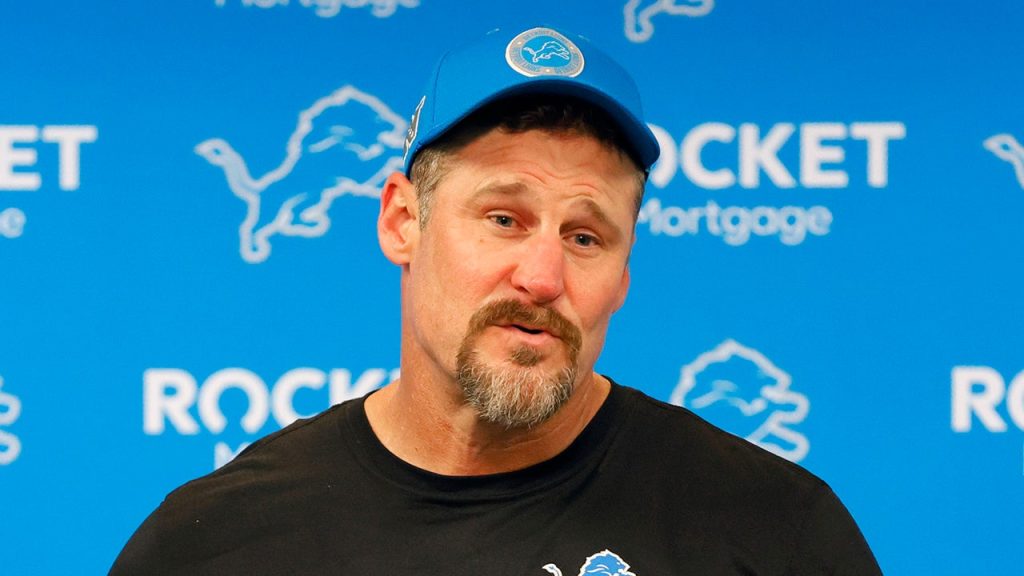The Detroit Lions’ audacious, yet ultimately disastrous, onside kick attempt against the Buffalo Bills in Week 15 ignited a fiery debate about the efficacy and viability of the onside kick in the modern NFL. Down by ten points with twelve minutes remaining in the game, Lions head coach Dan Campbell gambled on the low-probability play, hoping to swing momentum back to his team. Instead, the kick was recovered by Bills receiver Mack Hollins, setting up a Buffalo touchdown that effectively sealed the Lions’ fate. Retired NFL star J.J. Watt, known for his candid commentary, publicly criticized Campbell’s decision, likening it to wrestling a bear – a feat theoretically possible, yet undeniably foolish. Watt highlighted the statistically dismal success rate of onside kicks, a mere 7%, emphasizing the irrationality of attempting one in a relatively close game with ample time remaining. Campbell, in post-game remarks, admitted his regret, acknowledging the gamble backfired spectacularly.
The Lions’ failed onside kick attempt underscores a larger issue plaguing the NFL: the onside kick has become a nearly extinct play. Rule changes implemented in 2018, designed to enhance player safety on kickoffs, inadvertently neutered the onside kick. These changes eliminated the running start for the kicking team and restricted the number of players allowed within a certain proximity of the ball before it is kicked. Consequently, recovering an onside kick has become exceptionally difficult. Entering Week 15, a paltry 3 out of 41 onside kick attempts were successful, highlighting the play’s diminished utility.
The declining effectiveness of the onside kick has raised concerns among league officials, who are now grappling with the possibility of reviving the play. NFL executive Troy Vincent has acknowledged the need to re-examine the rules surrounding onside kicks, emphasizing the importance of ensuring every play remains competitive. Vincent suggested revisiting previous iterations of the rule, perhaps even allowing surprise onside kicks and reinstating the pre-2018 kickoff formation. These potential changes could introduce an element of unpredictability and restore the onside kick as a viable strategic option.
The underlying issue prompting the reassessment of the onside kick is the balance between player safety and the strategic integrity of the game. The 2018 rule changes, while undeniably successful in reducing injuries on kickoffs, have rendered the onside kick almost obsolete. This creates a dilemma for the league: how to maintain player safety while ensuring the game retains its strategic depth and excitement. The onside kick, when executed successfully, can be a game-changing play, injecting a dose of drama and unpredictability. Its current state of near-extinction deprives teams of a potentially valuable tool and diminishes the overall excitement of the game, particularly in its closing stages.
One proposed solution, put forth by the Philadelphia Eagles, involves replacing the onside kick with a 4th-and-20 attempt from the kicking team’s own 20-yard line. If the team successfully converts the fourth down, they retain possession. This alternative offers a more analytically driven approach, replacing the low-probability, often chaotic scramble for the ball with a more traditional football play. It also maintains an element of risk and reward, providing a potentially exciting moment while arguably reducing the risk of injury associated with the current onside kick format. This proposal, along with other potential rule adjustments, will likely be a focal point of discussion within the league’s competition committee.
The debate surrounding the onside kick mirrors the NFL’s ongoing struggle to balance player safety with the inherent physicality and strategic complexity of the game. The current rules, while effective in reducing injuries, have inadvertently rendered a once-exciting and potentially game-altering play almost entirely ineffective. The league must find a solution that preserves player safety while simultaneously reinvigorating the onside kick and restoring it as a viable strategic option. Whether that solution involves reverting to previous rules, adopting the Eagles’ 4th-and-20 proposal, or implementing an entirely different approach remains to be seen. The future of the onside kick, and its potential impact on the game, is a topic that will continue to be debated and refined in the coming seasons.

